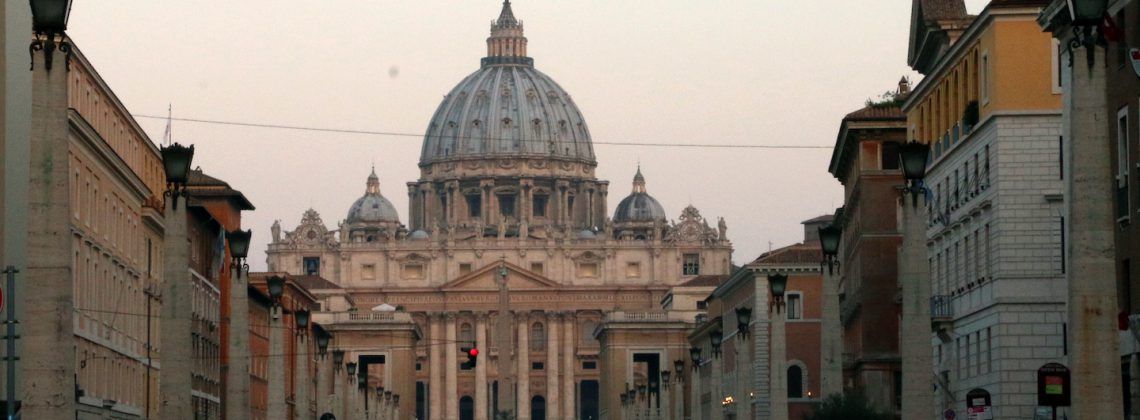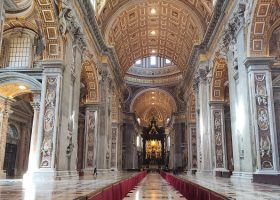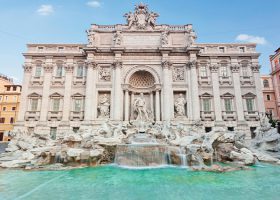St. Peter’s Basilica was one of the greatest accomplishments of the Renaissance, which makes it one of the greatest structures ever assembled by mortals. An accomplishment of this size comes with some mind-blowing facts and numbers. Here are the most astonishing facts about St. Peter’s Basilica in Rome.
Pro Tip: It’s easier to organize your trip when you have all your resources in one place. Bookmark this post along with our guide to St. Peter’s Basilica for more planning resources, our top Vatican and Basilica tours for a memorable trip, and how to visit St. Peter’s Basilica.
18 Astonishing Facts About St. Peter’s Basilica in Rome
Spanning the reign of 20 popes and every famous Renaissance architect you can name, St. Peter’s Basilica is the most important of the four major basilicas in Rome, which makes it the most important Catholic Church on Earth.
It’s also easily one of Rome’s most recognizable buildings. The basilica’s elaborate dome stands out in the Eternal City’s skyline—serving as a compass for all who wander Rome’s streets.
Here are a few of the most interesting facts about this magnificent place to give you some insight into its historical importance. Nothing beats hearing stories like this when you’re actually standing in the basilica with an expert guide, so definitely check out our popular St. Peter’s Basilica tours, including how to climb the dome.
Not ready to book a tour? Find out how to climb St. Peter’s Dome.
18. St. Peter Was Killed by Emperor Nero
St. Peter was in Rome during the reign of Emperor Nero in A.D. 64 after the death of Christ. It wasn’t a very convenient time, considering that the emperor had just blamed the Christians for a fire that destroyed half the city.
The Christians, who seemed like a radical cult to some, were the best scapegoat for an emperor with no conscience. So, Nero initiated the persecution of Christians. According to the dogma, St.Peter, St. Paul, and countless other Christians were martyred in this persecution.
Peter attempted to flee Rome, knowing his days were numbered. But Christ appeared to him and asked him to return to the city to meet his fate. As dogma goes, St. Peter was crucified upside down by Emperor Nero and buried in A.D. 64. This was all part of Nero’s plot to blame Christians for his great fire, which turned out to be partially successful.
17. The Basilica Is Built Over St. Peter’s Tomb
The position of St. Peter’s Basilica is not a coincidence. The Stadium of Nero was located on the very spot where the Vatican exists today. After St. Peter was taken from the cross, he was buried in a nearby necropolis together with pagans.
Popular Vatican Tours
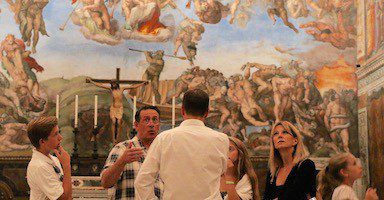
Best Seller
Privileged Entrance Vatican Tour with Sistine Chapel
This our most popular and longest-running Vatican tour to date. You’ll enter the Vatican Museums an hour before the public opening and see the breathtaking Sistine Chapel. Admissions are included and our English-speaking guides do a wonderful job bringing the museums to life!
See Prices
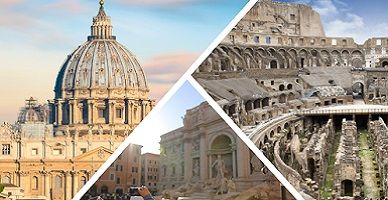
Customer Favorite
Rome in a Day Tour with Vatican, Sistine Chapel, Colosseum, and More!
Looking to get much of your sightseeing done in one day? This tour enters the Vatican an hour before opening and visits the Colosseum along with other sites like the Pantheon, Piazza Navona, and Trevi Fountain. All admissions and transportation are included as well as a licensed, English-speaking guide!
See Prices
Not ready to book a tour? Find out if a Vatican tour is worth it.
16. Emperor Constantine Built the First Basilica
When Christ first met Peter he said, “You are the rock upon which I will build my Church.” His name wasn’t even Peter at the time, it was Simon. Jesus changed his name to Peter, which means rock.
Constantine defeated Maxentius in A.D. 312 and legalized Christianity. He then took it upon himself to fulfill the scripture above and built a church on top of St. Peter’s tomb. Constantine’s mother, St. Helen, was a devout Christian, and this was likely a big deal for her. It’s not every day that your son fulfills the scriptures, right?
15. Constantine’s Basilica Stood for Almost 1,200 Years
The original basilica Constantine built lasted from the mid-fourth century A.D. (the 300s) until 1506. That’s a very long time. The current basilica was built under Constantine and, while it does not exist today in full form, the current basilica still uses foundational elements from the original structure. That means the foundation is nearly 1,700 years old!
14. Construction Began on the Current St. Peter’s Basilica in 1506
Pope Julius II decided it was time for a new basilica and he appointed Donato Bramante to design the current St. Peter’s Basilica. Bramante’s designs were later taken over by Raphael (the Raphael) a few years later.
The current basilica had contributions from every famous name in Italian art from Michelangelo to the father and son Modernos and Gian Lorenzo Bernini.
13. It Took 120 Years To Build
Yes, it took 120 years to build St. Peter’s Basilica, which is pretty impressive considering the magnitude of the structure. There were many works that went on even after that timeline. The last fountain, built by Bernini, was not finished until 1675.
12. There Were Five Main Architects
Bramante was the original architect of the structure, appointed in 1506, but he was replaced by Raphael in 1515. Raphael died in 1520 after only five years on the job. Raphael’s design reduced the tower sizes, which defined the squareness of the building’s exterior walls.
Both architects, Bramante and Raphael, were aiming for a Pantheon-inspired dome for the structure and wanted to go big. Michelangelo was appointed by Pope Paul III in 1547 to oversee the design and construction of Saint Peter’s Basilica.
Michelangelo is highly regarded as the basilica’s principal designer. He was coerced into the job by Pope Paul III. Michelangelo’s design paid reverence to the original aspects of Bramante’s design while reducing the definition of its geographic forms. Michelangelo definitely gets credit for the dome, without argument.
The facade of the building was designed and constructed by Carlo and Stefano Moderno, father and son. Gian Lorenzo Bernini also had a crack at the facade but failed, which we’ll come back to. Gian Lorenzo Bernini was the principal architect of one of the basilica’s most defining features—the square out front.
11. It is the Largest Church on Earth
The first thing you’ll notice when you enter is the sheer size of the basilica. It was designed so well, however, that you won’t really understand how big it is, because everything is so proportional inside.
As you walk in, the gold coffered ceiling in front of you is 150 feet high. The statues on both sides of you increase in size the higher up the wall you go. It all looks the same size but the difference is astounding! On the ground level, the statues are six feet. At the top, however, the statues are 24 feet high even though they look the same size!
Similarly, the size of the letters that go around the basilica will blow your mind. Each letter is actually eight feet in length. If you have nothing to compare it with, it’s hard to believe they’re that big. However, at times, there are people cleaning the basilica on the ceiling and you can see that they can actually fit inside the letters!
Popular Tours from Rome
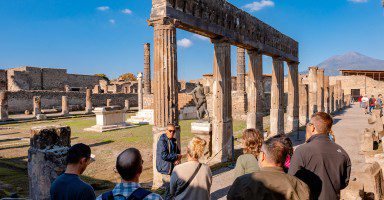
Best Seller
Unforgettable Rome Day Trip to Pompeii and Sorrento
Making a day trip from Rome to Pompeii and the Amalfi Coast can be daunting, with long travel times, complex routes, and tricky logistics to manage. Our full-day tour eliminates the stress, offering comfortbale transport straight to Pompeii. With an archaeologist guide, explore the ancient ruins without the hassle. Then, unwind with free time in Sorrento’s coastal charm. Led by a local guide and small group, this trip makes experiencing Italy’s highlights easy and enjoyable—all in one day.
See prices and more info
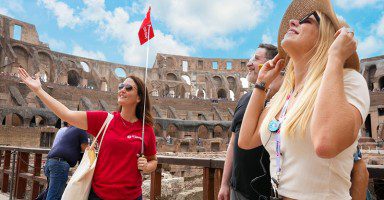
Best Seller
Rome in a Day Tour with Colosseum & Vatican Museums
Seeing the best of Rome in a single day might seem like a big undertaking, but our expertly designed tour makes it effortless with skip-the-line tickets, included transportation, and engaging guides to lead the way. In just 7 hours, you’ll visit renowned sites like the Sistine Chapel, Colosseum, Trevi Fountain, and Pantheon. With fascinating stories at every stop, you can skip the stress and immerse yourself in the vibrant heritage and culture of Rome all in one remarkable day.
See prices and more info
Not ready to book a tour? Check out our best Rome tours to take and why.
10. It Is Also the Tallest Dome on Earth
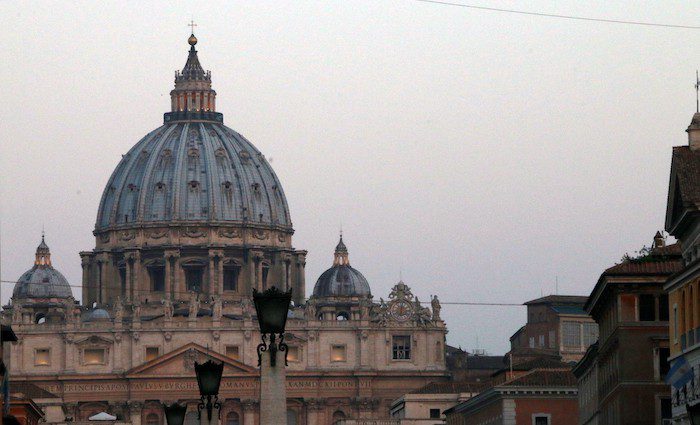
The dome of St. Peter’s Basilica was inspired by that of the Pantheon. Its structure was also inspired by Brunelleschi’s Duomo di Firenze. What distinguishes St. Peter’s dome is that it’s the tallest dome in the world. It is clearly visible in Rome’s skyline.
The dome is so tall that you could fit the statue of liberty inside it. Remember that this was built over 400 years ago. The exact dimensions of St. Peter’s Dome are 448.1 feet tall (136.5m). And you can experience this for yourself! If you decide to climb St. Peter’s dome, you’ll be rewarded with some of the best views in the Eternal City!
Not ready to book a tour? Find out how to do a St. Peter’s Dome climb.
9. Building Materials Were Stolen From Other Roman Structures
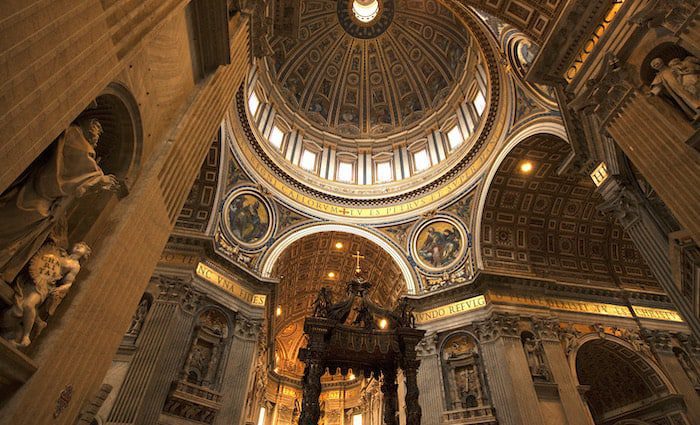
Gian Lorenzo Bernini designed the Baldacchino with the purpose of marking the tomb of Saint Peter. Bernini’s Baldacchino is a 95-foot tall bronze canopy inside St. Peter’s Basilica.
This imposing sculpted canopy is one of the basilica’s most renowned works of art. As you can imagine, it required a lot of bronze. So, where did they get all that bronze you ask?
When you go to the Pantheon, you’ll notice the porch is quite bare today. That’s because Pope Urban VIII took all the bronze that adorned the top of the porch for Bernini to melt down and repurpose in the making of this amazing structure! Take from one pocket in Rome and add to another!
If you look very closely at the top part of the Baldacchino, you’ll notice there are little bumblebees carved into the bronze. These indicate who paid for it, since the Barberini Pope Urban VIII’s papal emblem had bumblebees.
8. Bernini Built 284 Colonnades in St. Peter’s Square
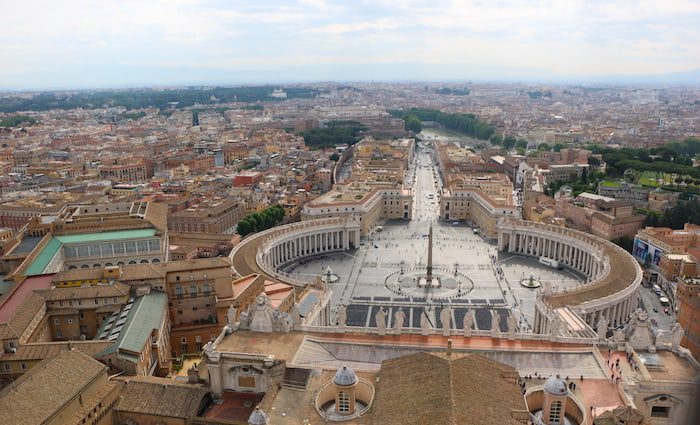
There are many ways to arrive at St. Peter’s Basilica, but it would be hard to argue any are more epic than walking down Via della Conciliazione. Mussolini carved out a road to create this epic feeling when approaching the center of Christendom.
There are many reasons not to like Mussolini, but we can all thank him for this road. It’s a memorable way to approach this incredible structure. Also, Bernini designed the Piazza San Pietro specifically to frame the basilica well.
Bernini built two massive arms of colonnades, which include 284 columns topped by 140 saints. The square is not circular despite popular belief. It’s more of an oval shape and the entrance to the square, formed by the columns opposite the basilica, is larger than the opposite side.
Bernini’s concept formed two arms held open to welcome the world with the help of the columns. I can speak to whether or not visitors perceive the columns this way, but I can say that every visitor is enamored by the grandeur of its construction.
7. The Two Fountains Out Front Were Built by Different Artists
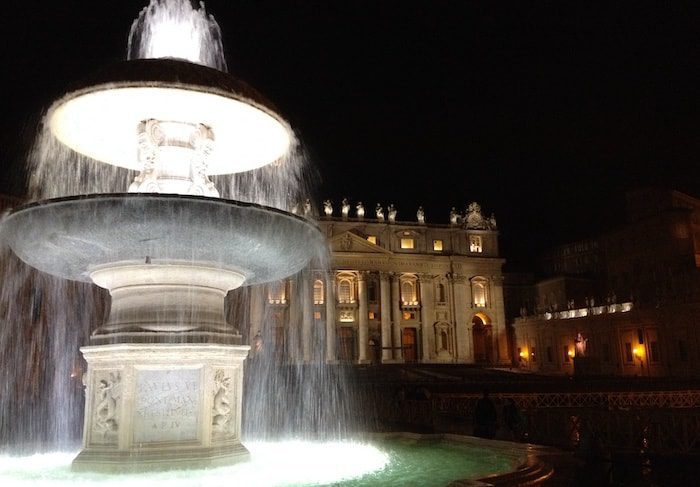
The square has two fountains on either side of a massive obelisk. Carlo Maderno designed the first fountain on the right in 1612. He also designed the facade of the building. Exactly 65 years later, in 1677, Bernini created a second fountain on the opposite side of the square that’s almost identical to Moderno’s design.
Today, fountains get very little appreciation unless they can move to the beat of a famous tune. However, if you imagine the tools available in the 17th century, it’s a pretty incredible feat. By tools, we’re not talking about hammers and such to carve the fountain, we’re talking about the water itself.
In those days, if you saw a fountain like the ones in St. Peter’s Square you’d wonder where they got the water from and how they managed to get it to shoot up that high without a river of rushing water nearby. While the Tiber is in fact nearby, it’s at a far lower level, so it wouldn’t allow this fountain to propel water up in the air. Magic!
6. Bernini Suffered his Largest Failure Working on the Basilica
Carlo Maderno designed the facade of St. Peter’s Basilica, but it did not always look the same. In the 17th century, Bernini added two bell towers to the facade in an attempt to better frame the massive dome behind it. However, they failed and became a stain on Bernini’s career. He managed to overcome it, but it never quite went away.
Eventually, the towers began to show signs of poor construction and cracked. They removed the towers, which you can imagine must have been extremely depressing for Bernini.
5. St. Peter’s Basilica Is Home To La Pietà by Michelangelo
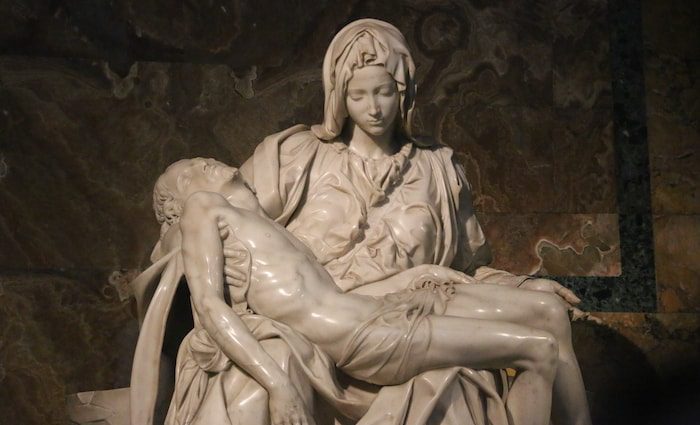
The iconic Renaissance artist Michelangelo sculpted La Pietà at the very end of the 15th century. You may remember Michelangelo as your favorite Teenage Mutant Ninja Turtle, or the classic artist who sculpted the David and painted the Sistine Chapel. La Pietà depicts Jesus after his crucifixion laying in Mary’s lap.
A French cardinal named Jean de Bilheres commissioned Michelangelo to create a sculpture to go into a side chapel of St. Peter’s Basilica in 1497. With a large block of Carrara marble and his irrefutable artistic craft, Michelangelo within a year created this incredibly detailed work of art.
Anything constructed by the hands of Michelangelo is royalty in the art world. Art historians admire his incredible ability to envision something shockingly elaborate out of a blank wall or a rigid piece of stone.
Additionally, La Pietà is known for its pyramidal structure, with Mary’s head serving as the vortex of the shape. Though extremely out of proportion, the shape of La Pietà has been widely lauded for its uniqueness and holiness.
Aside from the artist’s fame and the sculpture’s disproportion, La Pietà was involved in a breaking news scandal that contributed to the work’s fame. In 1972, a man named Laszlo Toth attacked the famous structure with a hammer after jumping over a rail inside of the basilica.
He smashed the sculpture repeatedly while yelling “I am Jesus Christ.” He severed Madonna’s entire left arm and left blows to her entire body. This attack on such a renowned work of art led to one of the most difficult art restorations to date. The restored work of art now sits behind a large bullet-proof glass shield.
4. 91 Popes Are Buried Under the Basilica
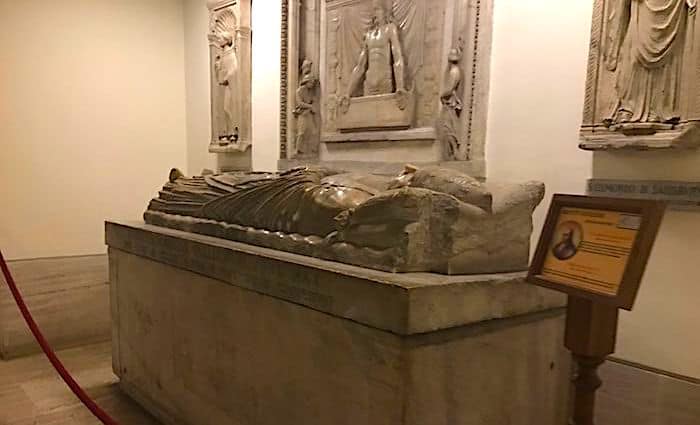
There are 91 popes buried in St. Peter’s Basilica, including the beloved John Paul II who was buried here in 2005. As you walk around the church, you’ll see some of the most monumental ones in the various niches along the corridors. As time passed, it has been impossible to house all of the popes above ground, so they began housing them below ground in what is called the Papal tombs or crypt.
The mix of popes buried here is quite eclectic. For example, you can see Saint Gregory I and the powerful Pope Alexander VII. If you go underground, you’ll find Bonficate VIII who was notoriously corrupt—a member of the Colonna family slapped him. On a more secular note, even Queen Christina of Sweden is buried here!
Popular Rome Tours

Best Seller
Privileged Entrance Vatican Tour with Sistine Chapel
This our most popular and longest-running Vatican tour to date. You’ll enter the Vatican Museums an hour before the public opening and see the breathtaking Sistine Chapel. Admissions are included and our English-speaking guides do a wonderful job bringing the museums to life!
See Prices

Customer Favorite
Rome in a Day Tour with Vatican, Sistine Chapel, Colosseum, and More!
Looking to get much of your sightseeing done in one day? This tour enters the Vatican an hour before opening and visits the Colosseum along with other sites like the Pantheon, Piazza Navona, and Trevi Fountain. All admissions and transportation are included as well as a licensed, English-speaking guide!
See Prices
Not ready to book a tour? Find out if Rome tours are worth it.
3. St. Peter’s Toes Are Coming Off
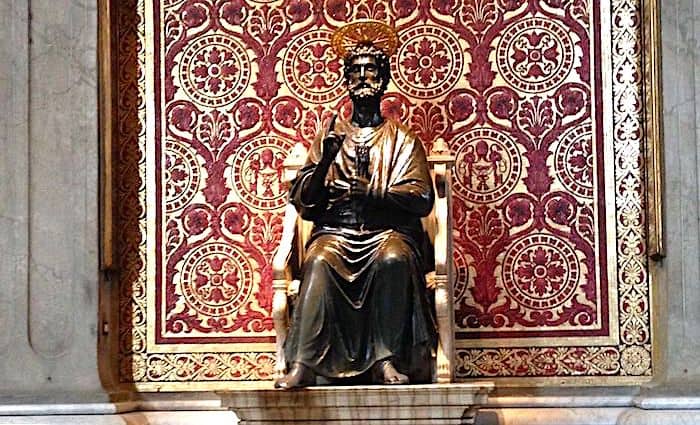
As you near the Baldacchino by Bernini, you might notice a line forming on your right-hand side. That is a line of people waiting to touch the foot of the statue of St. Peter as a blessing.
According to the Official website of St. Peter’s, the date of this statue is not clear and we also aren’t sure who built it. Many attribute it to Arnolfo di Cambio in the 13th century, but it’s uncertain.
Tradition over the centuries has been to rub his right foot as a blessing. When you get close, you’ll see that due to the constant rubbing, his toes have completely worn away! Now people have started rubbing his left foot as well.
2. You Can See a Dead Body in Plain Sight
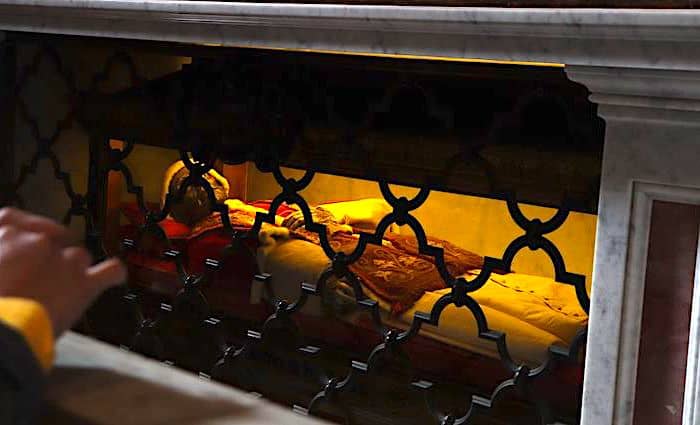
Innocent XI stands out as one of the most important popes of the 17th century. He stood out for his superior morals and his shunning of nepotism and corruption at a time when both of these attributes plagued the papacy.
His involvement in the victory of Austria against the Ottoman Empire was key in stopping the spread of Islam into Western Europe. Curiously, he is buried in full view for all to see inside the church.
He is fully clothed and has a mask over his face and hands so that you cannot see his bones. You’ll find him right below the painting (in fact, mosaic—see below) of the Transfiguration by Raphael.
1. The Paintings Are Actually Mosaics!
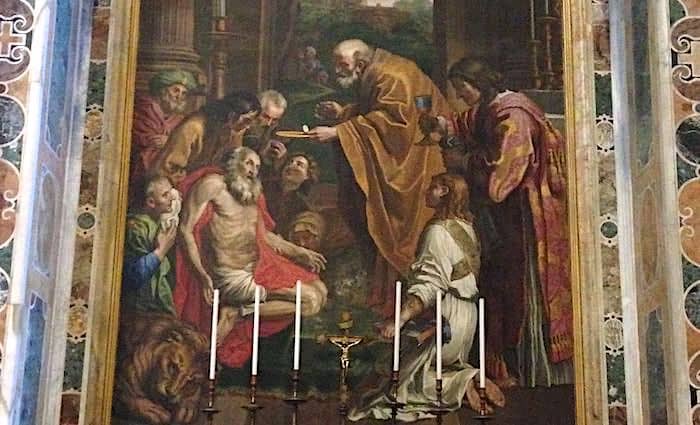
I’ll let you in on a little secret about the paintings in St. Peter’s Basilica: There are no paintings! They’re actually all glass or ceramic mosaics. In the 19th century, the many paintings that were in the church began to deteriorate due to the humid conditions inside the basilica.
This is why when you’re in the basilica you can take photos with a flash because you’re taking a picture of glass and not of a painting, so no damage will be done. You have to get very close to the picture to see the glare of light and the little squares of glass and ceramic. It’s a great surprise to show your friends when you visit!
Not ready to book a tour? Find out if a Vatican tour is worth it.
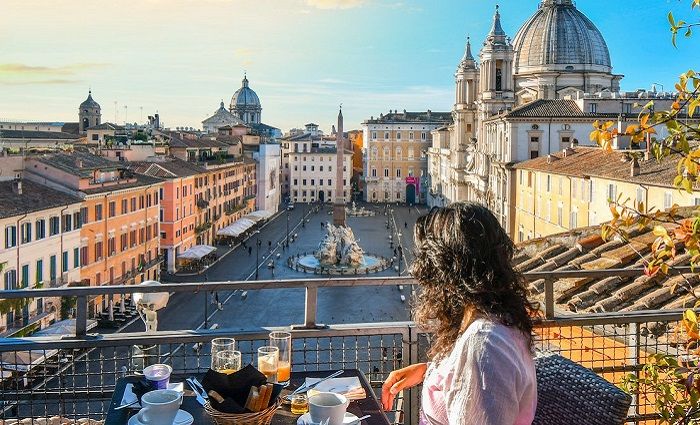
Where To Stay in Rome
Rome has a rich cultural history and many iconic landmarks to explore. Plan where to stay in the magnificent Eternal City in the best neighborhoods.

